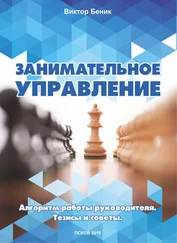Гилберт Д. Спотыкаясь о счастье. М.: Альпина Паблишер, 2017. 320 с.
Lyubomirsky, Sonja, Laura King, and Ed Diener. “The Benefits of Frequent Positive Affect: Does Happiness Lead to Success?” Psychological Bulletin 131, no. 6, ноябрь 2005 г.: 803–855.
Lyubomirsky, Sonja, Rene Dickerhoof, Julia K. Boehm, and Kennon M. Sheldon. “Becoming Happier Takes Both a Will and a Proper Way: An Experimental Longitudinal Intervention to Boost Well-Being.” Emotion 11, no. 2, апрель 2011 г.: 391–402; Lyubomirsky, Sonja, Kennon M. Sheldon, and David Schkade. “Pursuing Happiness: The Architecture of Sustainable Change.” Review of General Psychology 9, no. 2, 2005: 111–131.
Lyubomirsky, Sonja. The How of Happiness: A Scientific Approach to Getting the Life You Want . New York: Penguin Group, 2007.
Маслоу А. Дальние пределы человеческой психики. СПб.: Питер, 2018. 448 с.
Hodges, Timothy D., and Donald O. Clifton. “Strengths-Based Development in Practice.” Chap. 16 in Positive Psychology in Practice . Edited by P. Alex Linley and Stephen Joseph. Hoboken, NJ: John Wiley & Sons, 2004.
Бэкингем М., Клифтон Д. Добейся максимума: Сильные стороны сотрудников на службе бизнеса. М.: Альпина Паблишер, 2018. 240 с.
Бэкингем М., Клифтон Д. Добейся максимума: Сильные стороны сотрудников на службе бизнеса. М.: Альпина Паблишер, 2018. 240 с.
Drucker, Peter. “Managing Oneself.” Chap. 6 in Management Challenges for the 21st Century . New York: Harper Business, 2001.
Речь о статистическо-вероятностной модели – законе нормального распределения, который на графике изображен в виде колоколообразной кривой. ( Прим. ред .)
Зенгер Д., Фолкман Д., Шервин Р., Стил Б. Выдающийся лидер. Как закрепить успех, развивая свои сильные стороны. М.: Манн, Иванов и Фербер, 2017. 272 с.
Zenger, John H., and Joseph R. Folkman. “Develop Strengths.” Leadership Excellence 30, no. 1, январь 2013 г.: 12.
Quoted in Steen, Rob, Jed Novick and Huw Richards. The Cambridge Companion to Football . Cambridge: Cambridge University Press, 2013, p. 169.
Бэкингем М., Клифтон Д. Добейся максимума: Сильные стороны сотрудников на службе бизнеса. М.: Альпина Паблишер, 2018. 240 с.
Zenger and Folkman, “Develop Strengths.”
Citrin, James M., and Richard A. Smith. The 5 Patterns of Extraordinary Careers: The Guide for Achieving Success and Satisfaction . New York: Crown Business, 2005.
Brown, Jonathon D., and Keith A. Dutton. “The Thrill of Victory, the Complexity of Defeat: Self-esteem and People’s Emotional Reactions to Success and Failure.” Journal of Personality and Social Psychology 68, no. 4, апрель 1995 г.: 712–722; Kernis, Michael H., Joel Brockner, and Bruce S. Frankel. “Self-Esteem and Reactions to Failure: The Mediating Role of Overgeneralization.” Journal of Personality and Social Psychology 57, no. 4, октябрь 1989 г.: 707–714; Stephanou, Georgia, and Konstantinos Tatsis. “Effects of Value Beliefs, Academic Self-esteem, and Overgeneralization of Failure Experience on the Generation of Emotions and Attributions for Academic Performance.” International Journal of Learning 15, no. 11, 2009: 203–220.
Kanter, Rosabeth Moss. “How Leaders Gain (and Lose) Confidence.” Leader to Leader 35, зима 2005 г.: 21–27.
Schunk, Dale H. “Goal-Setting and Self-Efficacy During Self-Regulated Learning.” Educational Psychologist 25, no. 1, 1990: 71–86; Steyn, Renier, and John Mynhardt. “Factors that Influence the Forming of Self-Evaluation and Self-Efficacy Perceptions.” Suid-Afrikaanse Tydskrif vir Sielkunde [South African Journal of Psychology] 38, no. 3, сентябрь 2008 г.: 563–573.
Бэкингем М., Клифтон Д. Добейся максимума: Сильные стороны сотрудников на службе бизнеса. М.: Альпина Паблишер, 2018. 240 с.
Rosenthal, Robert, and Lenore Jacobson. “Pygmalion in the Classroom.” Urban Review 3, no. 1, сентябрь 1968 г.: 16–20.
J. Sterling Livingston. “Pygmalion in Management.” Harvard Business Review , июль/август 1969 г., 81–89.
Avolio, Bruce, and Fred Luthans. Psychological Capital: Developing the Human Competitive Edge . Oxford University Press, 2006.
Gardner, Howard. Frames of Mind: The Theory of Multiple Intelligences . New York: Basic Books, 1983.
Stanford University Communications. “‘You’ve Got to Find What You Love,’ Jobs Says.” Stanford News , 14 июня 2005 г. Сайт http://news.stanford.edu/2005/06/14/jobs-061505/.
Quoted in Wasik, John. “Apple Innovation Rules: Steve Jobs’s Secrets.” Forbes , 20 мая 2016 г. Сайт https://www.forbes.com/sites/johnwasik/2016/05/20/apple-innovation-rules-steve-jobss-secrets/#5066fadd3a4b.
Stanford University Communications, “‘You’ve Got to Find.”
Бэкингем М., Клифтон Д. Добейся максимума: Сильные стороны сотрудников на службе бизнеса. М.: Альпина Паблишер, 2018. 240 с.
American Institute of Stress. “Workplace Stress.” Accessed 12 апреля 2017 г. Сайт https://www.stress.org/workplace-stress/.
Health and Safety Executive. “Work related Stress, Anxiety and Depression Statistics in Great Britain 2016.” ноябрь 2016 г. Сайт http://www.hse.gov.uk/statistics/causdis/stress/stress.pdf.
Ricci, J. A., E. Chee, A. L. Lorandeau, and J. Berger. “Fatigue in the U. S. Workforce: Prevalence and Implications for Lost Productive Work Time.” Journal of Occupational and Environmental Medicine 49, no. 1, январь 2007 г.: 1–10.
Sanders, Robert. “Researchers Find out Why Some Stress Is Good for You.” Berkeley News , 16 апреля 2013 г. Сайт http://news.berkeley.edu/2013/04/16/researchers-find-out-why-some-stress-is-good-for-you/.
Dhabhar, Firdaus S., William B. Malarkey, Eric Neri, and Bruce McEwen. “Stress-Induced Redistribution of Immune Cells – from Barracks to Boulevards to Battlefields: A Tale of Three Hormones – Curt Richter Award Winner.” Psychoneuroendocrinology 37, no. 9, сентябрь 2012 г.: 1345–1368.
Читать дальше
![Тал Бен-Шахар Управление без власти и контроля [litres] обложка книги](/books/412485/tal-ben-cover.webp)





![Валентина Гордова - Во власти его величества [litres]](/books/385797/valentina-gordova-vo-vlasti-ego-velichestva-litres-thumb.webp)
![Анна Бену - Ты – сказка! Антистресс для больших и маленьких [litres]](/books/395566/anna-benu-ty-skazka-antistress-dlya-bolshih-i-ma-thumb.webp)
![Элисон Уэйр - Джейн Сеймур. Королева во власти призраков [litres]](/books/405981/elison-uejr-dzhejn-sejmur-koroleva-vo-vlasti-prizr-thumb.webp)
![Кен Швабер - Скрам [Гибкое управление продуктом и бизнесом] [litres]](/books/406567/ken-shvaber-skram-gibkoe-upravlenie-produktom-i-bi-thumb.webp)


